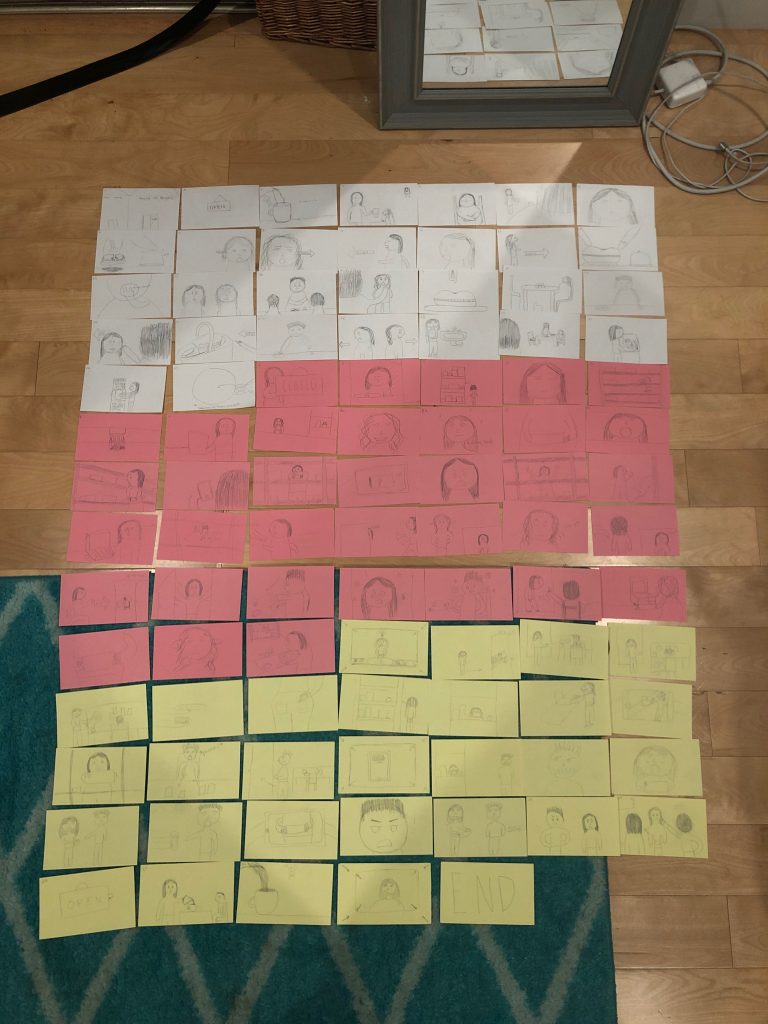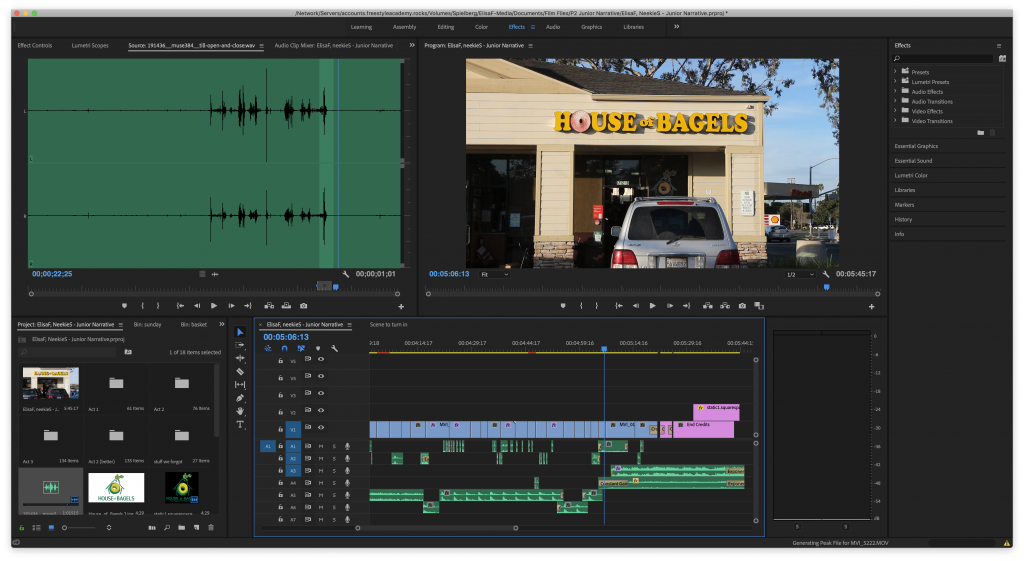Narrative Film
In Film class, the Narrative Unit was dedicated to learning about the different components of a narrative film, from establishing a scene, to creating suspense, to creating a chase scene. At the end of the unit, we combined all of our new skills into creating a full-length narrative short film.
Griffith’s Scene
Our first narrative exercise was the “Griffith’s Scene” exercise, in which we practiced using different varieties of shots in order to set up a scene. For example, we learned about the use of establishing shots, close-ups, and reaction shots in specific orders within a scene.
Suspense Scene
Our second narrative exercise was a suspense scene, in which we practiced building up suspense within a scene with fast-paced editing, a suspenseful plot, and close-ups.
Chase Scene
The final narrative exercise that we were given was to create a chase scene individually, incorporating Griffith-style establishing shots, and suspenseful editing. I chose to film a robbery with a happy ending in order to incorporate each element of narrative film that we had learned about.
Narrative Short Film
Our final project of the unit was to create a full-length narrative short film with a partner. The process took many small steps: pitching an idea, writing a synopsis, storyboarding the film, filming the shots in real life, editing the clips together and then adding music and sound effects.
Film Synopsis
The first act opens up with a waiter serving food or a drink to a customer at a table. Behind, standing by the wall, a busboy is staring with envy. The food bell rings for a completed order and the busboy, bored, springs up to serve the food. The waiter returns to the back to get food, notices the busboy, and orders him to clean some dishes instead of serving the food because it isn’t his job. The owner of the restaurant appears to tell the waiter to close the restaurant up.
The second act starts as the closed sign of the restaurant appears on the window. The busboy is putting leftover food away for disposal and notices the waiter stealing cash from the cash register. The busboy hides behind a rack (shelf depending on the location). The waiter puts the cash in his pocket and begins heading towards the busboy. The busboy panics and rushes back to his station in the kitchen. The waiter comes over and motions that he is leaving, he wants the busboy to close up the restaurant. The busboy cleans up and begins closing up the restaurant. He goes over to the cash register and tries to think of what to do. He goes through the money of the cash register and finds a 100 dollar bill. He then gets the idea to tape an “invisible” string (fishing line) to the bill that triggers an alarm or bell to be set off when taken too far from the cash register. He leaves the bill hanging out of the cash register before leaving the restaurant.
Act three begins when the store opens up in the morning. The waiter sees the 100 dollar bill and takes it out. As he puts it in his pocket, the alarm gets triggered, and the owner rushes over to the waiter stealing. The owner fires the waiter, and the movie ends on the busboy becoming a waiter and serving food.
Storyboards
After writing the synopsis of our film, we had to create our storyboards. This consisted of drawing out each individual shot of our film, portraying the relative positions of the characters, their expressions, and the camera movements. We would use these later during filming days in order to accurately shoot our film.

After shooting over the course of roughly 4 days at our location, we imported our footage onto the computer to begin the editing process.

Here are the final products below: